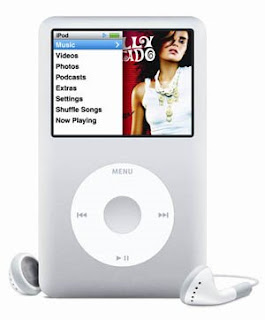
The media is a-buzz about Rogers Wireless' official announcement yesterday that it will be offering the iPhone in Canada. I'm floored by how big a deal everyone is making about this. But I do think a big reason has nothing to do with the iPhone itself, but rather the changes it could bring about in the wireless data pricing arena in Canada.
I've said many times over in this blog (as well as in the Cell Block column in Marketnews Magazine) that inflated data pricing has held Canadians back from really delving into the smartphone market, and all it has to offer. With the popular iPhone, paired with Apple's reputation of getting things its way, the introduction of this highly-anticipated device could also represent the introduction of more attractive data plans in Canada.
My inkling, although no details related to pricing have been officially announced, is that Rogers will indeed offer a more attractive data plan. But it will probably be marketed as an "iPhone plan", meaning you buy the iPhone and sign up for a three-year contract, and you qualify for this fantastic, new data plan. If you buy another device, or don't lock yourself into a contract, you'll be stuck with the existing, costly plans; or perhaps a small variation of them. Maybe I'm wrong on this, and it's all based on my own speculation, but it is indeed possible. It would make sense as a quick fix that lets Rogers sign on the dotted line for the iPhone before anyone else gets it, while also not moving too far away from its current data plan landscape. Such an offering would likely, however, wreak havoc with other smartphone makers, like RIM and its BlackBerry, as well as Nokia, and Windows Mobile-based phone makers. Will they end up getting the short end of the stick?
Given that the Advanced Wireless Spectrum Auction is set to take place May 27, 2008, however, Rogers also has another reason to examine its plans. If a new GSM carrier enters the foray, they may bring some enticing offers to the table. We all know how human nature works: as soon as a new GSM carrier is here, customers will flock to it, thinking that they'll be getting a better deal; and maybe they will be. Rogers certainly needs to look at what it offers, and think a few steps ahead to ensure that the company provides compelling reasons for customers to stay.
As for the iPhone, those who are squirming to own one should hope that the Rogers deal isn't exclusive in Canada. If going grey market is the only alternative option, we'd better hope that Rogers comes up with a darned good deal that convinces customers to go its route!
I've said many times over in this blog (as well as in the Cell Block column in Marketnews Magazine) that inflated data pricing has held Canadians back from really delving into the smartphone market, and all it has to offer. With the popular iPhone, paired with Apple's reputation of getting things its way, the introduction of this highly-anticipated device could also represent the introduction of more attractive data plans in Canada.
My inkling, although no details related to pricing have been officially announced, is that Rogers will indeed offer a more attractive data plan. But it will probably be marketed as an "iPhone plan", meaning you buy the iPhone and sign up for a three-year contract, and you qualify for this fantastic, new data plan. If you buy another device, or don't lock yourself into a contract, you'll be stuck with the existing, costly plans; or perhaps a small variation of them. Maybe I'm wrong on this, and it's all based on my own speculation, but it is indeed possible. It would make sense as a quick fix that lets Rogers sign on the dotted line for the iPhone before anyone else gets it, while also not moving too far away from its current data plan landscape. Such an offering would likely, however, wreak havoc with other smartphone makers, like RIM and its BlackBerry, as well as Nokia, and Windows Mobile-based phone makers. Will they end up getting the short end of the stick?
Given that the Advanced Wireless Spectrum Auction is set to take place May 27, 2008, however, Rogers also has another reason to examine its plans. If a new GSM carrier enters the foray, they may bring some enticing offers to the table. We all know how human nature works: as soon as a new GSM carrier is here, customers will flock to it, thinking that they'll be getting a better deal; and maybe they will be. Rogers certainly needs to look at what it offers, and think a few steps ahead to ensure that the company provides compelling reasons for customers to stay.
As for the iPhone, those who are squirming to own one should hope that the Rogers deal isn't exclusive in Canada. If going grey market is the only alternative option, we'd better hope that Rogers comes up with a darned good deal that convinces customers to go its route!
[Photo: Ted Rogers with William Shatner at the launch of video calling in Canada in early 2007. Rogers issued a statement yesterday confirming that the iPhone would be coming to Canada through its service "later this year".]





















